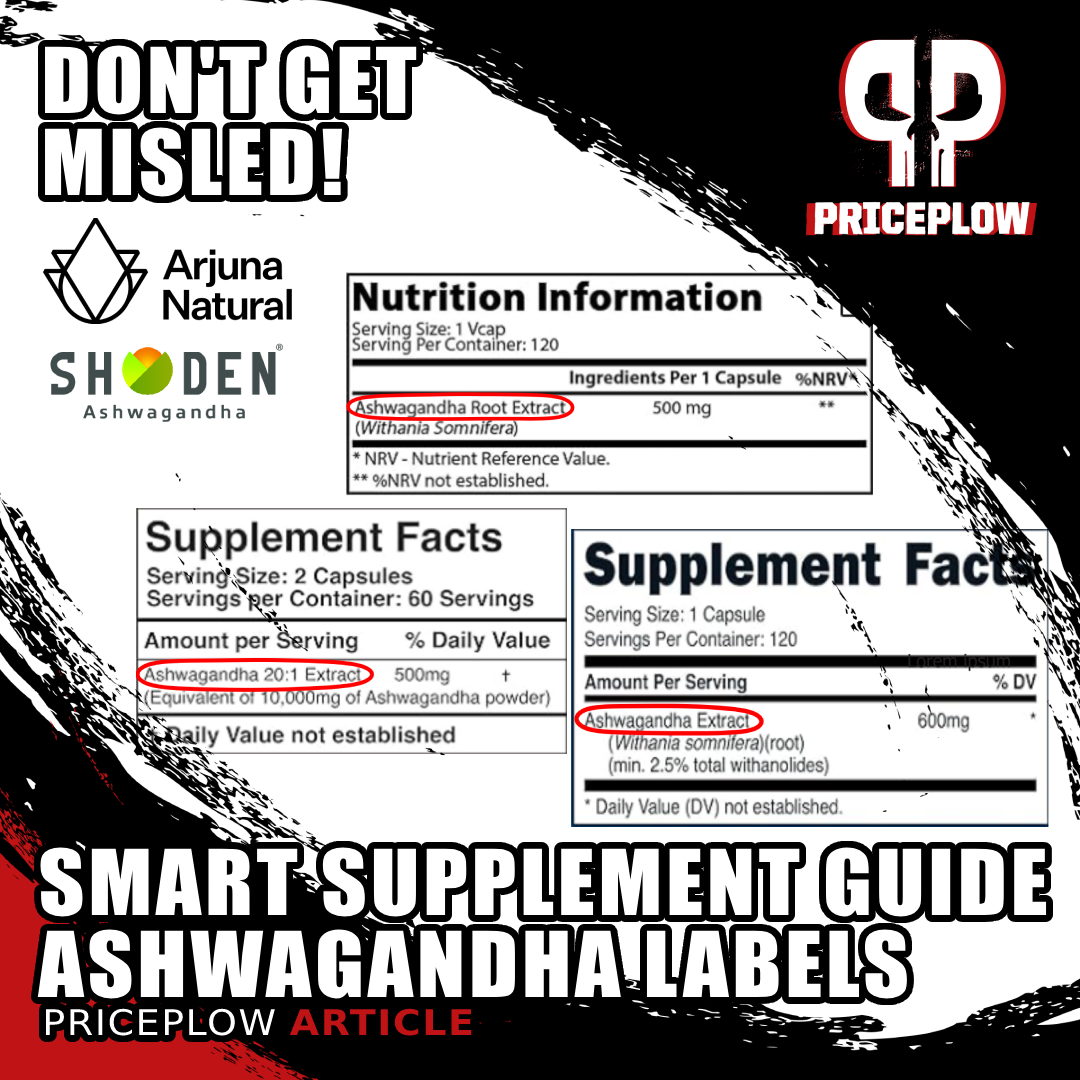
Not all ashwagandha extracts are created equal. This information explains why standardization issues, why extract ratios could be deceptive, and methods to determine high quality merchandise when searching for this widespread adaptogen.
Stroll into any complement retailer or browse on-line retailers, and also you’ll discover numerous ashwagandha merchandise commanding shelf house. This historical Ayurvedic herb has exploded in recognition for stress aid, sleep enchancment, and hormone help. However as shopper curiosity grows, so does a regarding actuality: not all ashwagandha extracts are created equally.
When searching for nutritional vitamins and minerals, it’s comparatively easy — 500mg of vitamin C is 500mg of vitamin C, virtually at all times from ascorbic acid. However with botanicals like ashwagandha, the scenario turns into rather more complicated. The standard, efficiency, and effectiveness of those extracts can differ dramatically primarily based on how they’re standardized, examined, and labeled.
This information will enable you to navigate the complicated world of ashwagandha complement labels, determine deceptive claims, and make knowledgeable decisions in regards to the merchandise you buy. As well as, you should use this information that can assist you learn to discern different botanical elements — the identical guidelines apply.
The Ashwagandha Label Confusion
Whenever you seek for ashwagandha dietary supplements on-line or browse retailer cabinets, you’ll encounter a bewildering array of choices with vastly completely different costs. The most affordable choices may cost beneath $10, whereas premium extracts can exceed $50. However what’s really inflicting this worth distinction, in addition to advertising and marketing puffery?
Not like nutritional vitamins and minerals, the place you typically know precisely what you’re getting, botanicals include complicated compounds that may be extracted, concentrated, and examined in varied methods. With ashwagandha, these lively compounds are primarily withanolides – naturally-occurring steroidal lactones answerable for most of the herb’s therapeutic results.
Let’s study the three most important forms of ashwagandha labeling you’ll encounter and what they actually imply for the standard of the product you’re shopping for.
Label Kind 1: The Fundamental “Root Extract”
When a label merely states “Ashwagandha Root Extract – 500mg” with none extra info, that is the naked minimal of disclosure… and is usually a crimson flag for high quality.
What This Truly Means
This might be so simple as a 1:1 extract, which means the producer has taken ashwagandha roots and created a fundamental extract with out any standardization of lively compounds. That is simply plain plant matter that has successfully had zero purity processing carried out to it.
When you know the quantity of extract per capsule, you could have no thought what focus of lively elements you’re really getting.
The Issues With Fundamental Extracts
With out standardization, there’s no means to make sure:
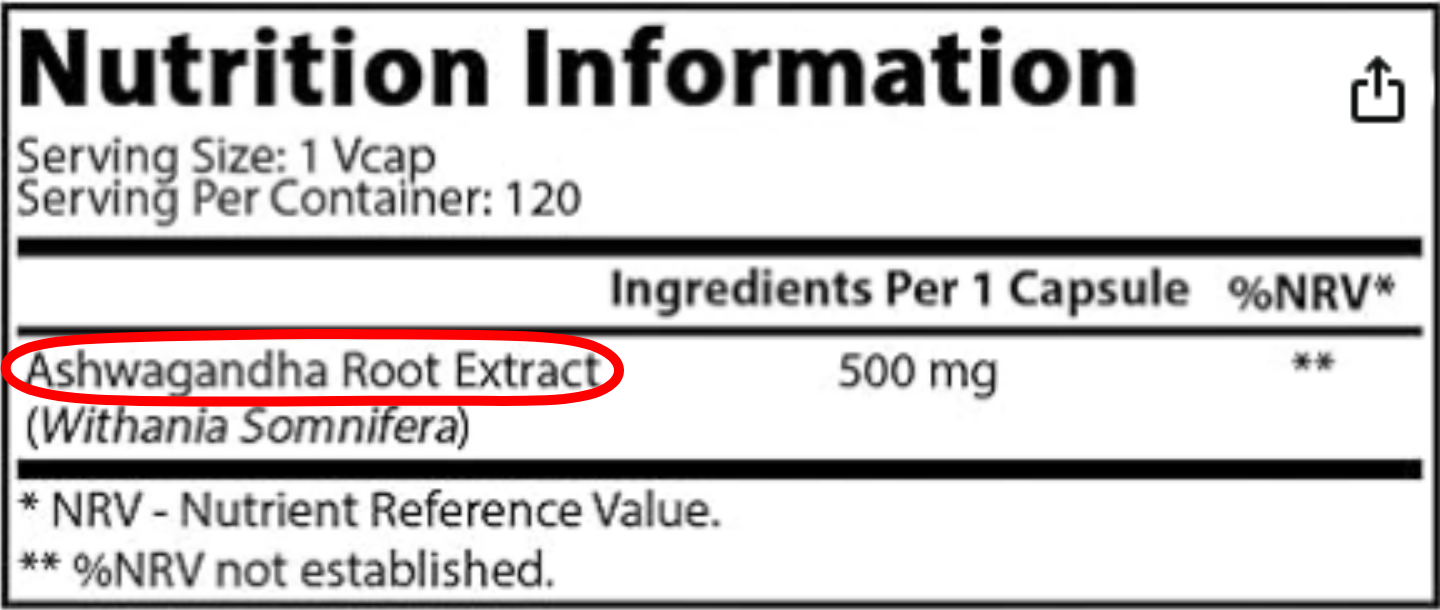

Essentially the most minimal complement label exhibiting simply “500mg Ashwagandha Root Extract” with no standardization particulars. This label offers zero perception into precise efficiency or lively compound content material.
- Batch-to-batch consistency: Every manufacturing run may include vastly completely different ranges of lively compounds
- Therapeutic effectiveness: Practically all medical research on ashwagandha are performed utilizing standardized extracts with particular ranges of lively compounds, and what’s in these merchandise will virtually by no means attain the efficiency of essentially the most well-studied extracts.
- Worth for cash: You may be paying for plant materials with minimal therapeutic profit. It’s oftentimes cheaper, however you’re coping with a disproportionately underpowered extract in comparison with clinically studied variations.
Inquiries to Ask
Whenever you see a product labeled this manner, ask your self (or the producer):
- What focus of withanolides does this include?
- How do you guarantee constant ranges of lively compounds between batches?
- What testing strategies are used to confirm efficiency?
Chances are high, you’ll not obtain high quality solutions from manufacturers utilizing such labeling requirements.
Label Kind 2: The Deceptive “Herb-to-Extract Ratio”
The second kind of labeling you’ll encounter makes claims like “Ashwagandha 20:1 Extract – 500mg” and sometimes consists of statements akin to “equal to 10,000mg of uncooked herb!”
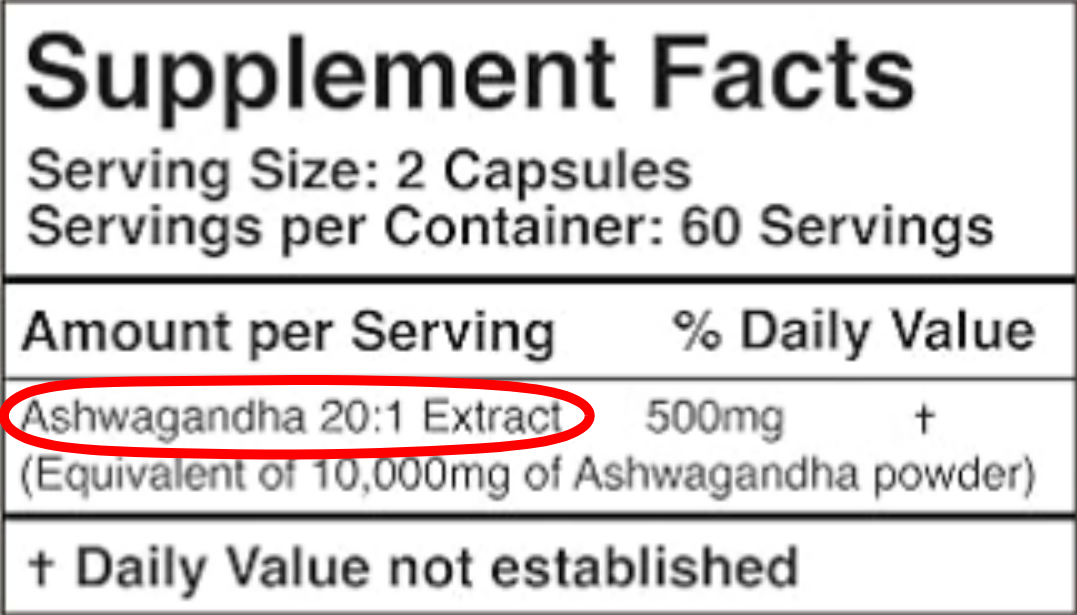

Reveals the deceptive “20:1 extract ratio” method claiming “equal to 10,000mg of Ashwagandha powder.” These unverifiable claims inform shoppers nothing about precise withanolide content material.
Breaking Down Extract Ratios
In concept, a 20:1 extract ratio implies that 20 elements of uncooked herb materials had been used to create 1 a part of ultimate extract. So 20 grams of uncooked ashwagandha would produce 1 gram of extract. This can be a respectable place to begin, but when that is all you’re instructed, it’s nonetheless not sufficient info.
The Issues With Extract Ratios
This labeling method has a number of vital points:
- Unverifiable claims: There’s no scientific take a look at that may affirm whether or not an extract is really 20:1, 15:1, 10:1, and even 5:1. Producers can declare any ratio with out worry of verification.
- Exploitation potential: Due to the above, some corporations produce 5:1 extracts however label them as excessive as 40:1 just by altering the certificates of study – charging premium costs for traditional merchandise.
- Variable lively content material: Uncooked ashwagandha crops differ tremendously of their withanolide content material relying on:
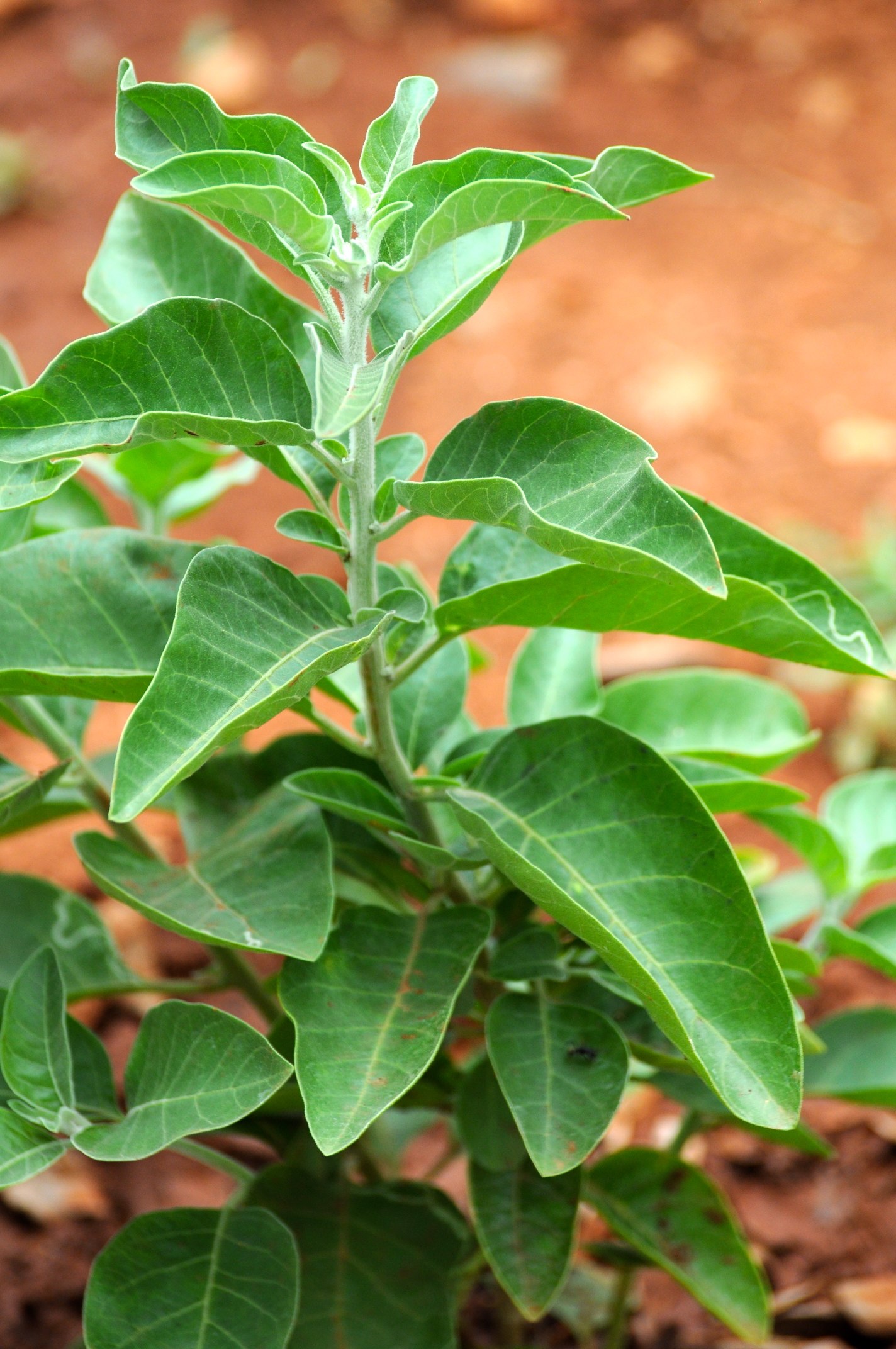
Also referred to as Withania somnifera, ashwagandha is the dietary complement business’s most outstanding adaptogenic herbs. Picture courtesy Wikimedia Commons.
- Rising area
- Local weather situations
- Harvest timing
- Seasonal variations
- Deceptive equivalency: The “equal to X mg” claims assume that every one uncooked ashwagandha accommodates similar ranges of lively compounds, which is demonstrably false.
The Actual Fact About Equivalency
When a label claims a 500mg capsule of 20:1 extract is “equal to 10,000mg of ashwagandha powder”, it’s making a functionally deceptive assertion. The extract could certainly be derived from 10,000mg of powder, however:
- That particular batch of uncooked herb may have had unusually low or excessive withanolide content material
- The extraction course of may not have effectively captured the lively compounds
- The ultimate product may include broadly various ranges of therapeutic compounds
Labels that declare “equivalency” inside the complement details panels aren’t compliant with the FDA’s laws, both. By definition, the one factor that’s “equal” to the ten,000mg of unique powder is the ten,000mg of unique powder. As soon as it’s been processed, it’s merely not equal, and people claims are puffery (at greatest) and deceitful (at worst).
Label Kind 3: The Standardized Extract
The third and most informative labeling method appears to be like one thing like: “Ashwagandha Root Extract – 600mg, standardized to 2.5% complete withanolides”.
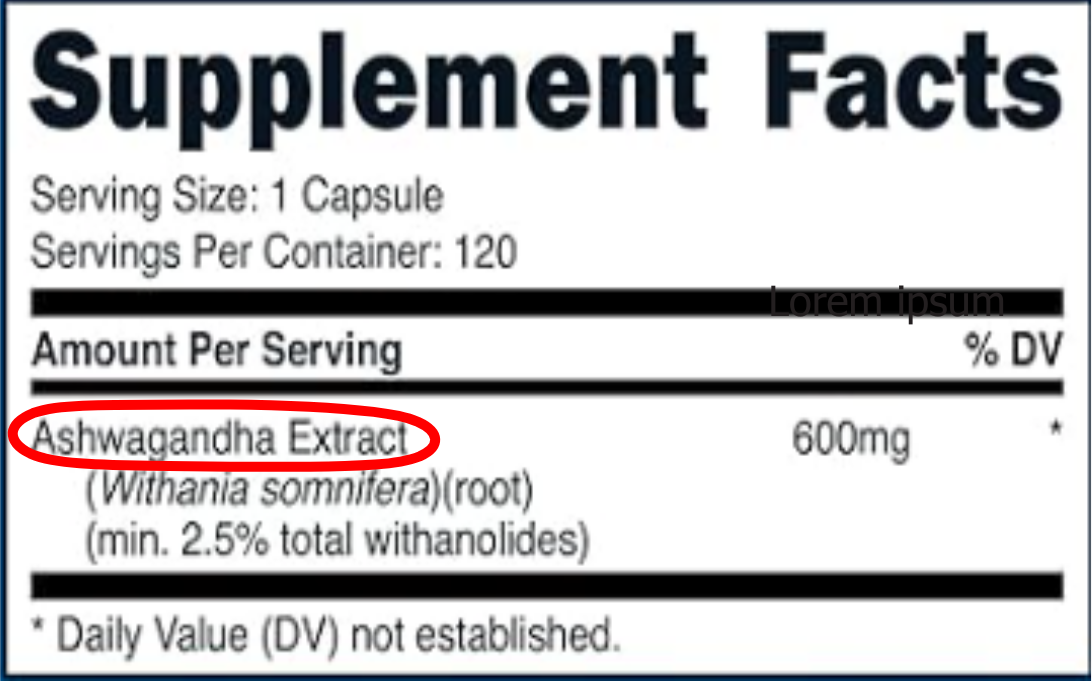

Improved label exhibiting “600mg ashwagandha standardized to 2.5% complete withanolides” however nonetheless lacking crucial testing methodology info and glycoside-to-aglycone ratio that impacts bioavailability.
Why Standardization Issues
Standardization ensures that every capsule accommodates a particular, measured quantity of lively compounds – on this case, withanolides. A 600mg extract standardized to 2.5% withanolides would include 15mg of withanolides per capsule.
The Testing Methodology Drawback
Nonetheless, even standardized extracts have a hidden complexity: the testing methodology used to find out withanolide content material.
Two main testing strategies exist:
- Gravimetric testing: An older, crude methodology that measures complete weight after precipitation
- HPLC (Excessive-Efficiency Liquid Chromatography): A extra correct, fashionable methodology that particularly identifies particular person compounds
Right here’s the crucial distinction: an extract exhibiting 2.5% withanolides through gravimetric testing would sometimes solely present 1-1.5% when examined through HPLC! But each might be labeled identically as “2.5% withanolides” since producers aren’t required to reveal testing strategies.
The Value Implication
This testing distinction has vital value implications:
- Gravimetrically examined materials can value one-third the value of HPLC-verified materials
- Customers haven’t any technique to know which testing methodology was used primarily based on the label alone
As you possibly can see, there are ranges to understanding the ashwagandha market. Fortunately, we’re studying how the business is dramatically enhancing its skills and communication:
The Glycoside Issue
Past standardization percentages lies an much more essential issue that just about no labels disclose: the type of withanolides current within the extract. That is what we not too long ago lined in our article titled “Ashwagandha Evolution: Shoden and the Rise of Glycoside-Enhanced Extracts“.
Glycosides vs. Aglycones: A Crucial Distinction
Withanolides exist in two most important types:
- Withanolide Aglycones: The “free” type of withanolides (together with compounds like withaferin A)
- Much less secure within the digestive system
- Extra quickly metabolized
- Decrease bioavailability
- Withanolide Glycosides: Withanolides certain to sugar molecules
- Extra secure throughout digestion
- Higher absorption patterns
- Superior bioavailability
The Hidden Fact About Most Extracts
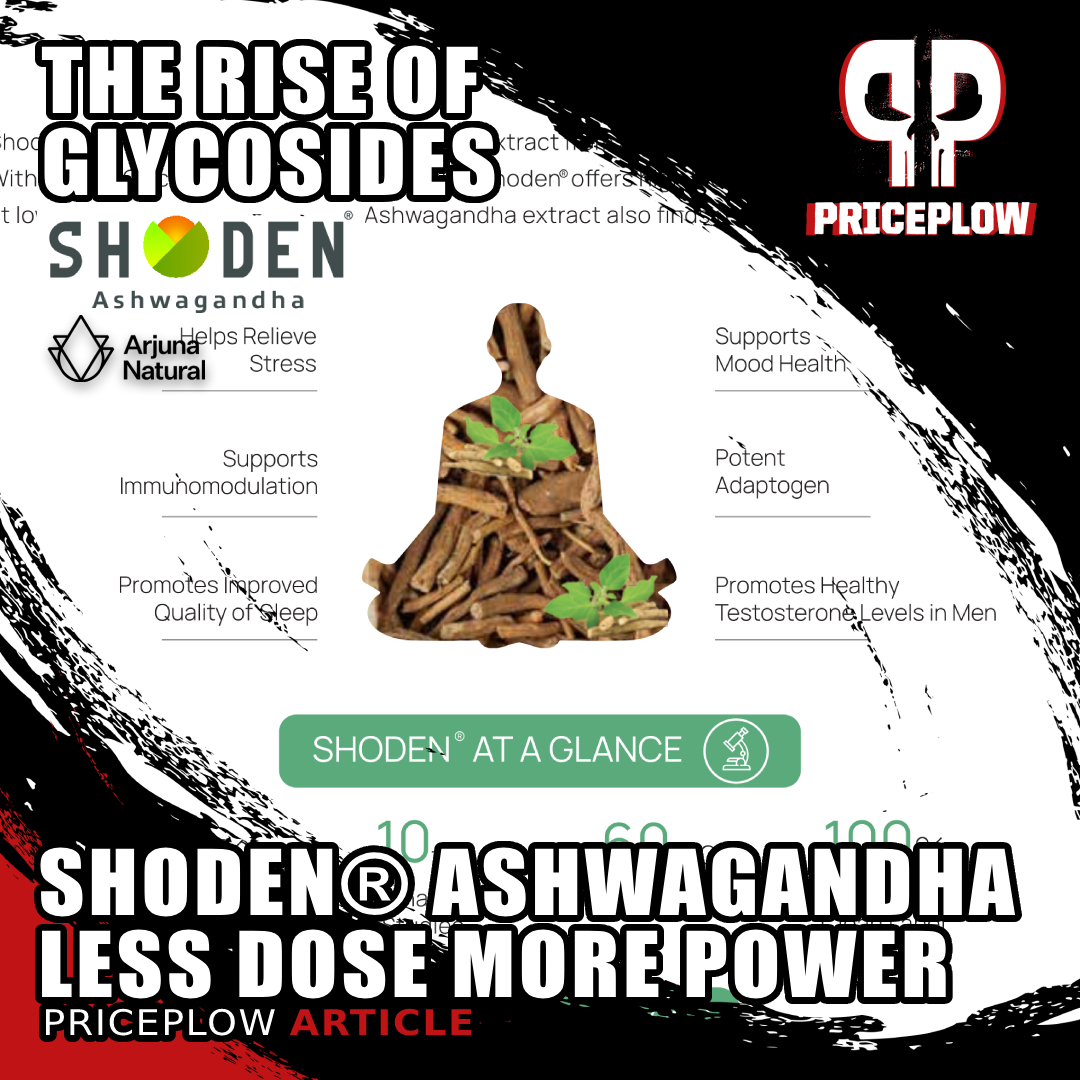

Shoden brings a brand new period to ashwagandha dietary supplements with 35% glycowithanolide standardization. Analysis reveals it delivers highly effective results at simply 60-120mg each day, in comparison with 600mg+ with conventional extracts.
In a typical ashwagandha extract standardized to 2.5% complete withanolides:
- Majority are often within the much less bioavailable aglycone type
- Low ranges are within the extra bioavailable glycoside type
- Labels hardly ever disclose this breakdown
Because of this two merchandise with similar “2.5% withanolides” claims may have vastly completely different therapeutic results primarily based on the glycoside-to-aglycone ratio!
The best way to Be a Sensible Ashwagandha Shopper
Armed with this data, listed here are key inquiries to ask when evaluating ashwagandha dietary supplements:
- Is the extract standardized? If not, the lively compound content material is unknown.
- What testing methodology is used? HPLC is extra dependable than gravimetric testing.
- What’s the glycoside content material? Larger glycoside content material sometimes means higher absorption and efficacy.
- Is the methodology printed? Clear corporations are prepared to share their testing strategies.
- What plant elements are used? Some extracts use roots solely, whereas others mix roots and leaves for a broader spectrum of compounds.
Shoden: A New Commonplace in Ashwagandha Labeling
One extract that addresses these business points is Shoden from Arjuna Pure, the sponsor of this text. What makes it completely different:
- Trade-leading glycoside content material: Standardized to 35% withanolide glycosides utilizing HPLC testing
- Clear methodology: Their testing methodology is printed and out there for overview
- Clear specification: Particularly identifies glycoside content material fairly than simply complete withanolides
- Clinically validated: Reveals vital results at a lot decrease doses (60-120mg) in comparison with conventional extracts (300-600mg)
The Bioavailability Benefit
Analysis demonstrates that glycosidic types of withanolides provide vital benefits by way of:
- Larger absorption charges
- Longer time spent in circulation
- Better general organic effectiveness
A comparative research discovered that Shoden’s bioavailability was considerably larger than commonplace extracts, with:[1]
- 18 occasions larger complete withanolide ranges (space beneath curve)
- 6 occasions larger most focus
- 4.13 occasions longer imply residence time
This explains why Shoden demonstrates medical results at doses as little as 60mg each day, whereas conventional extracts sometimes require 300-600mg for comparable outcomes.
Conclusion: Studying Between the Label Traces
In relation to ashwagandha dietary supplements, the knowledge not proven on the label is usually extra essential than what’s displayed. Whereas the business lacks standardized pointers for testing and disclosure, educated shoppers could make higher decisions by understanding what to search for.
Keep in mind these key factors when evaluating ashwagandha merchandise:
- Extract ratios alone are unreliable indicators of high quality
- “Equal to X mg” claims are mathematically correct however functionally deceptive
- Testing methodology dramatically impacts reported withanolide content material
- The glycoside-to-aglycone ratio is crucial for bioavailability
- Transparency in testing and standardization is a trademark of high quality producers
By trying past advertising and marketing claims and understanding what really issues in ashwagandha extracts, you possibly can choose merchandise that ship the advantages this exceptional adaptogenic herb has to supply.
This Applies to Different Botanicals, Too
Word that these classes could be utilized to quite a few different herbs and botanical extracts — their standardizations and lively molecules will differ from the withanolide glycosides we search with ashwagandha, however the general thought stays the identical.
To study extra about ashwagandha particularly, learn our most important article on Shoden Ashwagandha and join our Arjuna Pure information alerts beneath, so that you simply don’t miss out on any upcoming Shoden analysis or product launches:
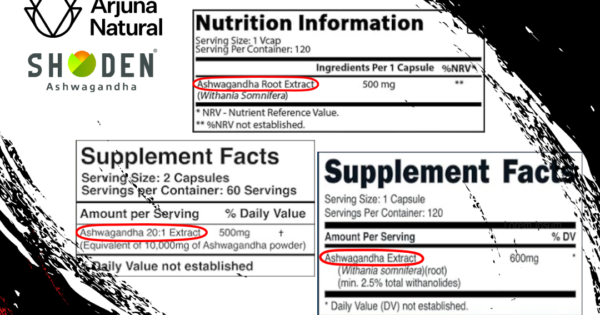

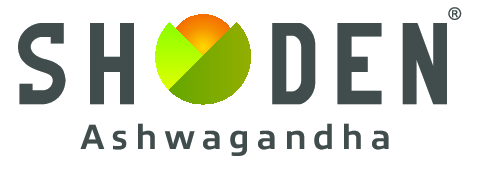
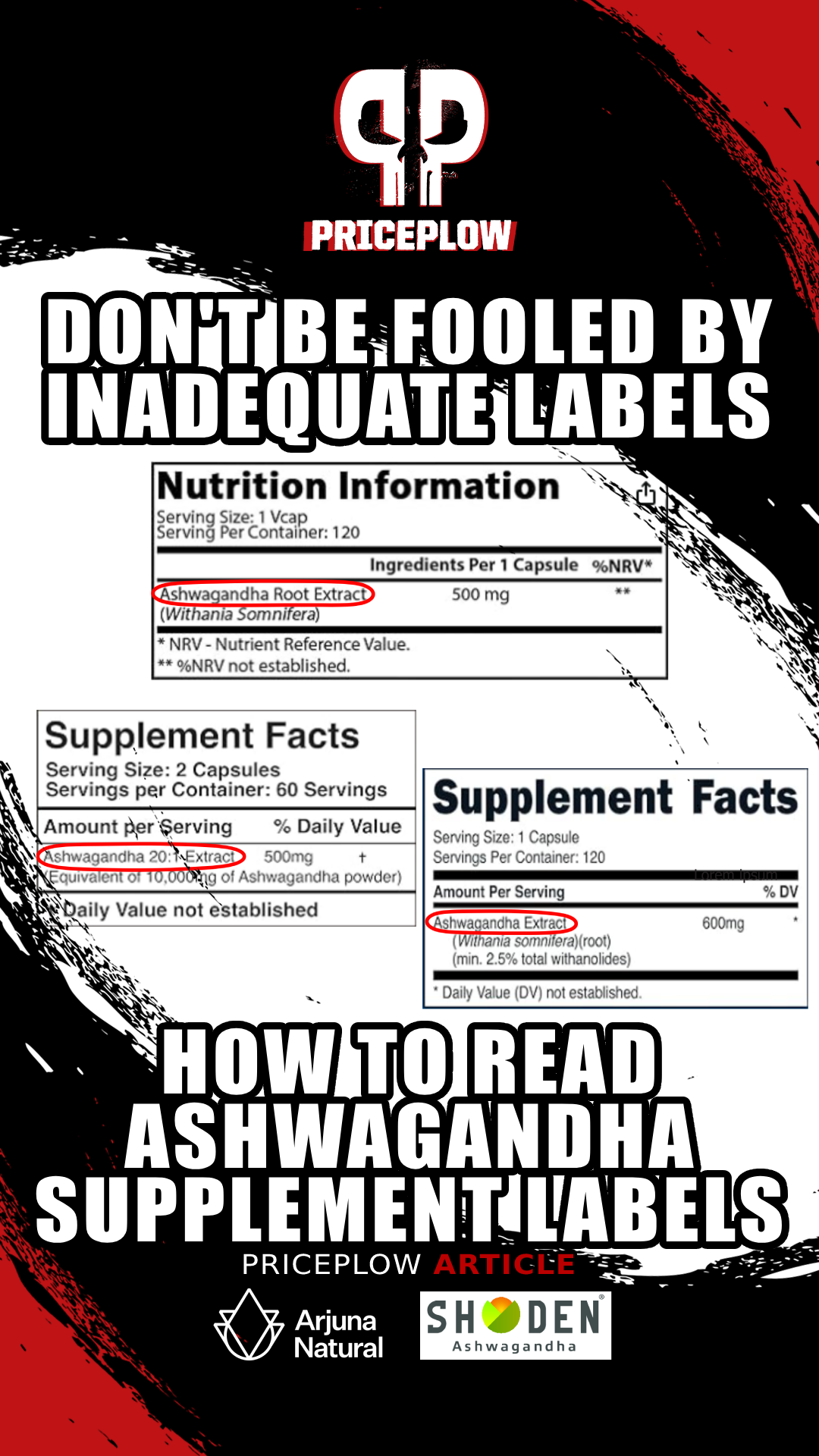








Discussion about this post